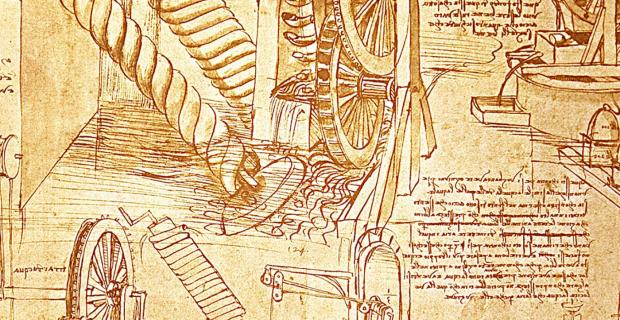The Intelligence of Ecological Design

The most important discovery of the past two centuries is that we are joined in one fragile experiment, vulnerable to bad judgment, shortsightedness, greed, and malice.
Though divided by nation, tribe, religion, ethnicity, language, culture, and politics, we are comembers of one enterprise stretching back through time beyond memory, but forward no further than our ability to recognize that we are, as Aldo Leopold once put it, plain members and citizens of the biotic community.
This awareness carries both an imperative and a possibility. The imperative is simply that we ought to pay full and close attention to the ecological conditions and prerequisites that sustain all life. That we seldom know how human actions affect ecosystems or the biosphere gives us every reason to act with informed precaution. And, because of the scale and momentum of the human presence on Earth, it is utter foolishness to assert otherwise.
There is also the possibility that in the long gestation of humankind we acquired an affinity for life, Earth, forests, water, soils, and place, what E. O. Wilson calls "biophilia". That is more than a defensible hypothesis—it is the best hope for our future. For real hope, as distinguished from wishful thinking, we ought not look first to our technological cleverness or abstractions about progress of one kind or another, but rather to the extent and depth of our affections, which set boundaries to what we do and direct our intelligence to better or worse possibilities. The possibility of affection for our children, place, posterity, and life is in all of us. It is part of our evolutionary heritage. It is embedded in all of our best religious teachings. And it is now a matter of simple self-interest that we come to realize the full extent of the obligations that arise from an alert, thorough, and farsighted affection.
Perhaps biophilia helps to explain the rise of something that is beginning to look a great deal like a worldwide ecological enlightenment. The global transition to wind and solar energy systems has begun in earnest. Sustainable agriculture and forestry are gaining ground. The art and science of energy-efficient building is flourishing. The possibilities for transforming manufacturing and technology to mimic natural systems are revolutionary. The science of ecological healing and restoration has made significant progress.
The most exciting career opportunities that I know add the word "environment" to fields such as design, planning, medicine, business, law, journalism, education, agriculture, and development. Small nongovernmental organizations such as the Bioneers, Rocky Mountain Institute, the Center for Ecoliteracy, Schumacher College, Ecotrust, the Jane Goodall Center, and Ocean Arks are influential worldwide. The Internet is opening new possibilities for citizens of the world to cooperate, spread ideas, and hold governments accountable. Still, I think H. G. Wells had it right when he said that we are in a race between education and catastrophe. This race will be decided in all of the places, including classrooms, that foster ecological imagination, critical thinking, awareness of connections, independent thought, and good heart.
For its part environmental education is becoming well established in nonprofit organizations, public agencies, schools, colleges, and universities. The words "environmental education," however, imply education about the environment, just another course or two, a curricular outbuilding to the big house of formal schooling where the really important things go on. But we will have to aim toward a deeper transformation of the substance, process, and scope of education at all levels. The title of my 1992 book, Ecological Literacy, identifies that goal, which is built on the recognition that:
- The disorder of ecosystems reflects a prior disorder of mind, making it a central concern to those institutions that purport to improve minds. In other words, the ecological crisis is in every way a crisis of education.
- The problem, as Wes Jackson once said of agriculture, is one education, not merely in education.
- All education is environmental education … by what is included or excluded we teach the young that they are part of, or apart from, the natural world.
- The goal is not just mastery of subject matter but making connections between head, hand, heart, and cultivation of the capacity to discern systems — what Gregory Bateson once called "the pattern that connects."
An ecologically literate person would have at least a basic comprehension of ecology, human ecology, and the concepts of sustainability, as well as the wherewithal to solve problems. Taken to its logical conclusion, the goal of making all of our students ecologically literate would restore the idea that education is first and foremost a large conversation with technical aspects, not merely a technical subject. Whatever the state of our pedagogical research, the life of the mind is and will remain a mysterious and serendipitous process only somewhat influenced by formal instruction (sometimes to no good effect). As a large conversation, we would restore to the subject of education the importance that every great philosopher from Plato, through Rousseau, to Dewey and Whitehead assigned to it. Education, as they knew, had to do with the timeless question of how we are to live. And in our time the great question is how we will live in light of the ecological fact that we are bound together in the community of life, one and indivisible, now threatened by human numbers and carelessness.
There are four conclusions to be drawn. First, if ecological education is confined to schools that function like islands within a larger sea of ecological ruin — malls, highways, urban blight, rural slums, and pollution — they will eventually fail to transform anything. To be effective, education must engage the wider society. Second, nongovernmental organizations, schools, colleges, universities can be catalysts to a wider transformation of the culture and society, all the more so because of the dereliction of governments and business. Third, if they are to be transformative, the educational environment, campus, and curriculum must themselves be transformed to reflect ecological realities. Fourth, the goal of ecological literacy is not a passive kind of literacy to be confused with reading, as important as that is, but rather the active cultivation of ecological intelligence, imagination, and competence, which is to say design intelligence.
A word about the third and fourth points: Thoreau went to Walden, he said, in order to drive some of the problems of living into a corner where he could study them. In like manner, might it be possible to drive some of the problems of sustainability confronting the rising generation into a setting such as the school or university, and to render them into courses, curriculum, research, and eventually solutions? For example, beginning in 1995 I organized an effort with students, faculty, and members of the public to design and build an environmental studies center at Oberlin College. Students met in 13 planning sessions and thereafter with a group of architects and designers to develop the concepts finally embodied in the Adam Joseph Lewis Center. The goals they selected for the project included energy efficiency, use of solar energy, wastewater recycling, elimination of toxic materials, and a building that would learn over time while functioning as a microcosm in which to study some of the challenges of building sustainability at a community scale. These also became central to the educational mission that evolved from the project.
The result is a building and landscape that has become a laboratory for the study of ecologically-engineered solutions for wastewater; solar energy; ecological restoration; ecological design; data gathering, analysis and display; landscape management; horticulture; and the art of communicating these things to the wider public. But these subjects require mastery of skills different from those required to build an industrial society. We've aimed, accordingly, to foster in our students the specific capacities to appraise costs on a life cycle basis, analyze whole systems, and master new tools such as geographic information systems, as well as the practical skills required to harvest sunshine, grow food, design buildings, restore landscapes, and initiate change.
The Lewis Center, in turn, was instrumental in catalyzing the formation of the Cleveland Green Building Coalition, a 75-acre community-supported farm, a $13 million building project in downtown Oberlin organized by three recent graduates, and a new company consisting of three students and one faculty member focused on commercializing the art and science of the analysis and display of data such as buildings' energy performance. The Lewis Center was also instrumental in encouraging college trustees to adopt a comprehensive environmental policy for the college that includes the goal of becoming climatically neutral. In other words, the building was a means to the larger ends of improving ecological competence, ecological design skills, and initiating real changes.
The challenge to us as educators is to equip our students with the practical skills, analytic abilities, philosophical depth, and moral wherewithal to remake the human presence in the world. In short order, as history measures these things, they must replace the extractive economy with one that functions on current sunlight, eliminates the concept of waste, uses energy and materials with great efficiency, and distributes wealth fairly within and between generations. We will have to recast the systems by which we provision ourselves with food, energy, water, materials, and livelihood, and by which we handle our wastes. These, in turn, imply the need to design organizations that are capable of ecological design. The particular skills of ecological design necessary to a future that is sustainable and spiritually sustaining are in turn means to a still larger end of fostering hope in a world of growing despair, and anger, and its offspring, terrorism, whether by individuals, organizations, or governments.
A headline in the Science section of The New York Times dated March 16, 2004 read "Side by Side, Palestinians and Israelis Repair a Ruined River." Imagine that! To comprehend the ecology of a river and the human systems that impact it requires ecological intelligence emerging across the conventional boundaries of disciplines. For Israelis and Palestinians to join together in an endeavor to heal across the chasm rent by hatred, fear, and violence is a still larger design challenge having to do with the connections between human ecology, natural systems, and the possibilities of forgiveness and redemption. Ecological design aims toward this kind of healing in the awareness that health, healing, wholeness, and holy are one and indivisible.
This essay appeared originally in Resurgence, September/October 2004.




